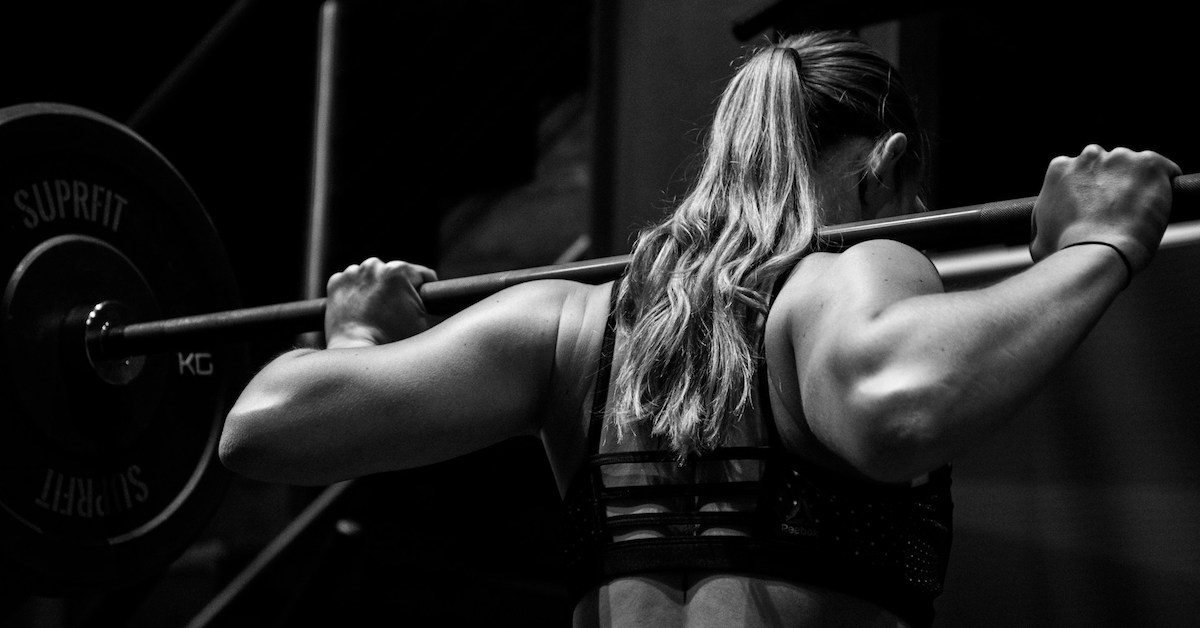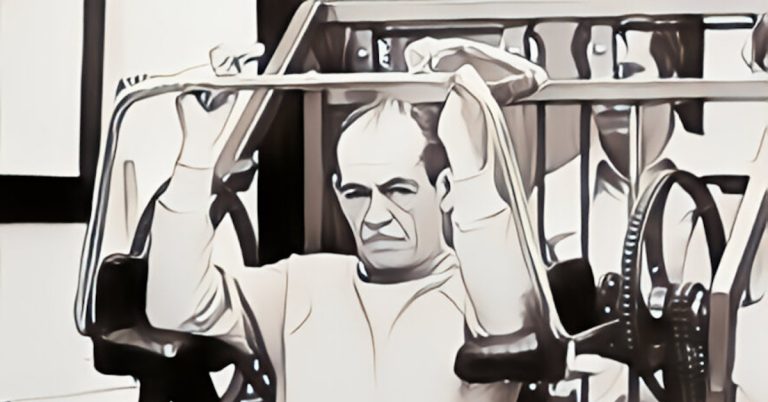Here’s an excerpt from my new book The Elite Trainer: Strength Training for the Serious Professional…
Needs Analysis
After a training goal is established, conduct a needs analysis of both the individual (i.e., current biomotor abilities, health status, past and present injuries, somatotype or body type, availability for training) and the sport/activity (i.e., optimal biomotor abilities, dominant energy system, prime movement patterns and muscles, primary sites of injury).
In his Advanced Program Design course, Chek (1999) proposes an interesting strategy to analyze the key biomotor abilities, which include strength, power, speed, agility, balance, coordination, endurance, and flexibility. On a simple scale of 1-10, rank an individual for each biomotor ability and compare it against an optimal score for their particular work or sport demand. Of course, the numbers are strictly arbitrary, but it gives you a good idea of which abilities require greater attention. You should then concentrate most of your effort on improving those areas.
For individuals concerned primarily with aesthetics rather than performance, rank the development of each major muscle group on a scale of 1-10 (Staley, 2002). Focus most of your training on the lagging muscles to improve overall body symmetry and appearance.
Specificity
Appearance generally improves when training for function, but the opposite is not always true! In athletics, train the movements. In bodybuilding, train the muscles (Thibaudeau, 2003).
When training athletes, focus on the quality of strength in the gym not the actual sporting movement – that is best left for on the field (DeFranco, 2004; Siff, 1999, 2000b; Vermeil, 2004; Young, 1991). For example, it may be more appropriate for a golfer to perform the snatch-grip deadlift or squat push press than to try to mimic the golf swing with cables or elastic resistance.
Specificity in training is important, but being too specific with additional loading can adversely affect athletic performance. The more you mimic a movement with significant resistance, the more you disrupt motor patterns (McGuff & Little, 2009). You will never completely simulate in the gym what you could do on the field (Young, 1991), and if you spend too much time on so-called “sport-specific” movements, you will increase the likelihood of overuse injuries (Siff, 2000a; Vermeil, 2004).
Furthermore, if you are an endurance athlete, it is rather redundant to train for endurance in the gym (Vermeil, 2004). Again, leave that for on the field or track. Use your time wisely in the weight room. Research shows that maximal and explosive strength training improves muscle power, work economy, and speed of movement (Hoff et al., 2002; Paavolainen et al., 1999; Schmidtbleicher, 1980, 1996). Be patient though. It may take up to three weeks to transfer newly acquired strength to the sport.
Energy System Training
Concentrate your efforts on training the dominant energy system (anaerobic alactic, anaerobic lactic, or aerobic) for your sport or activity. Most sports require a greater emphasis from the anaerobic alactic energy system (see Table 1 below). In football, for instance, the average play is around 5 seconds long and the average rest between plays is roughly 35 seconds. Although the number of plays (i.e., sets) will vary depending on the level and position of the player, energy system training in football should consist predominantly of 4- to 10-second work intervals and 20- to 40-second rest intervals for optimal results (DeFranco, 2010; Iosia & Bishop, 2008; Rhea et al., 2006). Just like training a skill, metabolic conditioning is very specific (McGuff & Little, 2009).
Table 1. Energy system chart (adapted from Fox et al., 1993 and Mackenzie, 1997)
| % Emphasis by Energy System | |||
| Classification – | Anaerobic Alactic | Anaerobic Lactic | Aerobic |
| Energy Supply – | ATP + CP | Muscle Glycogen | Fatty Acids |
| Duration – | 1-10 seconds | 10-120 seconds | 120+ seconds |
| Baseball | 80 | 15 | 5 |
| Basketball | 60 | 20 | 20 |
| Fencing | 90 | 10 | |
| Field Hockey | 50 | 20 | 30 |
| Football | 90 | 10 | |
| Golf | 95 | 5 | |
| Gymnastics | 80 | 15 | 5 |
| Ice Hockey – Forward, Defense – Goalie | 60 90 | 20 5 | 20 5 |
| Lacrosse – Goalie – Defense, Attacker – Midfielder | 50 50 60 | 20 20 20 | 30 30 20 |
| Rowing | 20 | 30 | 50 |
| Skiing – Slalom, Jumping – Downhill – Cross-Country – Recreational | 80 50 5 20 | 15 30 10 40 | 5 20 85 40 |
| Soccer – Goalie, Striker – Halfback | 60 60 | 30 20 | 10 20 |
| Swimming & Diving – Diving – 50 m – 100 m – 200 m – 400 m – 1500 m | 98 90 80 30 20 10 | 2 5 15 65 40 20 | 5 5 5 40 70 |
| Tennis | 70 | 20 | 10 |
| Track & Field – 100 m, 200 m – Field Events – 400 m – 800 m – 1500 m (1 mile) – 3000 m (2 mile) – 5000 m (3 mile) – 10000 m (6 mile) – Marathon | 95-98 95-98 80 30 20-30 10 10 5 negligible | 2-5 2-5 15 65 20-30 20 20 15 5 | 5 5 40-60 70 70 80 95 |
| Volleyball | 80 | 5 | 15 |
| Wrestling | 90 | 5 | 5 |
References
Chek, P. (1999). Advanced program design [Correspondence course]. Encinitas, CA: Paul Chek Seminars.
DeFranco, J. (2004). 10 training myths exposed! In Testosterone. Retrieved from http://www.t-nation.com/findArticle.do?article=04-081-training
DeFranco, J. (2010). Football conditioning: The right way! In DeFranco’s Training. Retrieved from http://www.defrancostraining.com/ask-joe.html?start=16
Fox, E.L., Bowers, R.W., and Foss, M.L. (1993). The physiological basis for exercise and sport (5th ed.). Dubuque, IA: Wm. C. Brown Communications.
Hoff, J., Gran, A., and Helgerud, J. (2002). Maximal strength training improves aerobic endurance performance. Scandinavian Journal of Medicine and Science in Sports, 12(5), 288-295.
Iosia, M.F., and Bishop, P.A. (2008). Analysis of exercise-to-rest ratios during division IA televised football competition. Journal of Strength and Conditioning Research, 22(2), 332-340.
Mackenzie, B. (1997). Energy pathways. In BrianMac Sports Coach. Retrieved from http://www.brianmac.demon.co.uk/energy.htm
McGuff, D., and Little, J. (2009). Body by science: A research-based program for strength training, body building, and complete fitness in 12 minutes a week. New York, NY: McGraw-Hill.
Paavolainen, L., Häkkinen, K., Hämäläinen, I., Nummela, A., and Rusko, H. (1999). Explosive-strength training improves 5-km running time by improving running economy and muscle power. Journal of Applied Physiology, 86(5), 1527-1533.
Rhea, M.R., Hunter, R.L., and Hunter, T.J. (2006). Competition modeling of American football: Observational data and implications for high school, collegiate and professional player conditioning. Journal of Strength and Conditioning Research, 20(1), 58-61.
Schmidtbleicher, D. (1980). Maximalkraft und bewegungsschnelligkeit [Maximum strength and speed of movement]. Bad Homburg, Germany: Limpert Verlag.
Schmidtbleicher, D. (1996). Some neuromuscular aspects of human movements and the consequences for the muscular rehabilitation. In J. Abrantes (Ed.), Proceedings of the XIVth International Symposium on Biomechanics in Sports (pp. 120-129). Lissabon: Edicoes FMH. Retrieved from http://w4.ub.uni-konstanz.de/cpa/article/viewFile/2675/2509
Siff, M.C. (1999). Supertraining (4th ed.). Denver, CO.
Siff, M.C. (2000a, October). Applied science in conditioning for rehabilitation and performance. Seminar presented in Mississauga, ON.
Siff, M.C. (2000b). Facts and fallacies of fitness (4th ed.). Denver, CO.
Staley, C. (2002). 10 things athletes do to shoot themselves in the foot. In Bodybuilding.com. Retrieved from http://www.bodybuilding.com/fun/staley3.htm
Thibaudeau, C. (2003). The black book of training secrets. Quebec: n.p.
Vermeil, A. (2004, October). High-performance workshop. Seminar presented at the Athletic Conditioning Centre in Ottawa, ON.
Young, W. (1991). The planning of resistance training for power sports. National Strength and Conditioning Association Journal, 13(4), 26-29.

The Elite Trainer: Strength Training for the Serious Professional
The Elite Trainer is the go-to resource for strength coaches, personal trainers, and serious lifters who want to master program design. Covering everything from sets and reps to tempo, rest, and periodization, this book gives you the tools to create individualized programs that deliver results. Packed with proven methods, expert insights, and over 100 exercise illustrations, it’s a must-have reference for anyone serious about strength training.

Stretching Smarter: The Do’s and Don’ts for Maximum Flexibility
By JP CatanzaroOriginally published: September 23, 2014 – Updated for 2025 Want to boost flexibility, prevent injuries, and optimize performance?

Training Economy: How Weight Training Can Be Your All-in-One Fitness Solution
Recent research has once again confirmed what many in the weightlifting community already know: weight training isn’t just for building

4 Invaluable Lessons from Strength Training Pioneer Arthur Jones
Arthur Jones, a true visionary in the realm of strength training, left an unforgettable mark on the fitness industry with
follow
Error: No feed with the ID 2 found.
Please go to the Instagram Feed settings page to create a feed.
